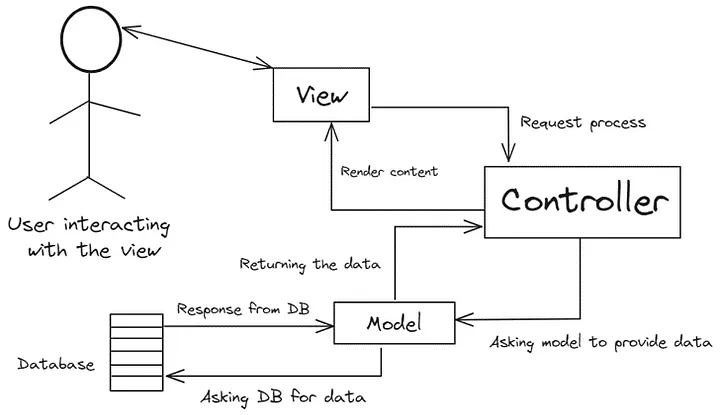
Hi 👋,
I hope this finds you well. I was earlier assigned a project proposal in a course of Professional Practices on the topic “Software Development and Society,” particularly within the realm of Human Resource (HR) management systems. Long story short, the mentioned architecture was chosen as an assumption to derive a possible conclusion, and this article aims to cover MVC, aligning with the topic.
Architecture Synopsis:
One common architecture pattern that can be followed for this project is the Model-View-Controller (MVC) architecture. For a web-based HR management system, several architecture patterns can be considered based on factors such as scalability, maintainability, and security.
Model:
The Model represents the data and business logic of the HR management system. It encapsulates the data access layer, which interacts with the database to perform CRUD (Create, Read, Update, Delete) operations on employee information, payroll data, performance evaluations, etc.
In the context of this project, the Model would include classes or entities representing employees, departments, positions, and other relevant data entities. It would also include business logic for processing HR-related tasks such as employee onboarding, leave management, and performance reviews.
View:
The View represents the user interface (UI) of the HR management system. It presents data to users in a human-readable format and captures user input through forms, buttons, and other UI elements.
In the MVC architecture, the View is responsible for displaying HR-related information to HR managers, employees, and other stakeholders. It should provide intuitive navigation, interactive features, and responsive design to enhance user experience.
Controller:
The Controller acts as an intermediary between the Model and the View. It receives user requests from the View, processes them by invoking appropriate methods in the Model, and updates the View with the results.
In the context of this project, the Controller would handle HTTP requests from web browsers or client applications, route them to the appropriate components in the Model, and render the corresponding views based on the requested actions.
Benefits of MVC Architecture:
1) Separation of concerns:
MVC separates the presentation layer (View) from the business logic (Model) and request handling (Controller), making the system easier to understand, maintain, and test.
2) Reusability:
Components in the MVC architecture can be reused across different modules or projects, reducing development time and effort.
3) Scalability:
MVC supports modular development, allowing developers to scale individual components (e.g., adding new features or integrating third-party services) without affecting other parts of the system.
4) Flexibility:
MVC provides flexibility in choosing technologies and frameworks for each layer, enabling developers to use the most suitable tools for their specific requirements.
Connect with me 🍕
If you have any questions, feel free to reach to me on LinkedIn 🚀